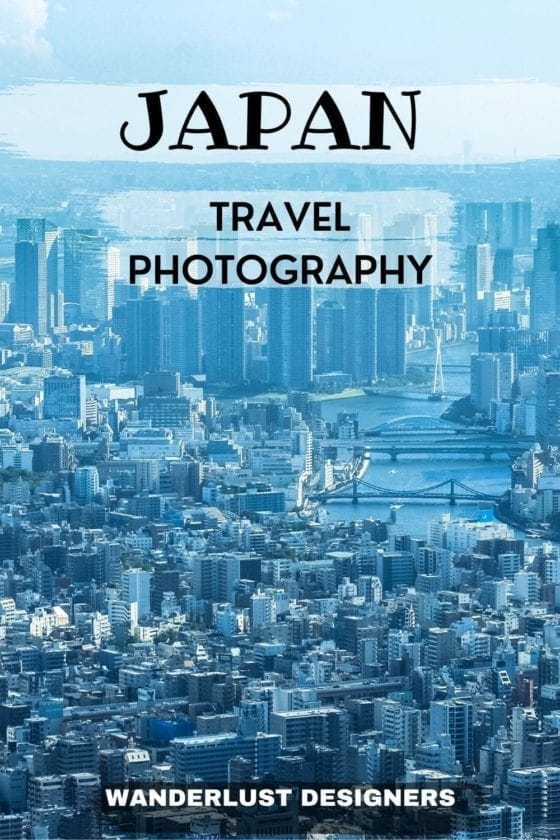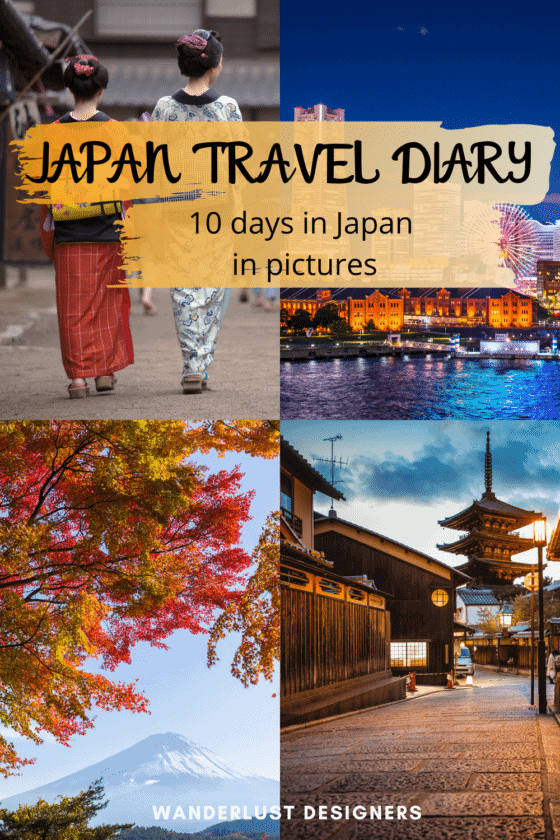Japan in November: 10-day itinerary in pictures
Visiting Japan is like hopping on a rollercoaster of amazing and unique experiences. It doesn’t matter if you visit Japan in November during the height of Autumn foliage, or in April when the sakura blooms – the Cherry Blossom season.
From admiring the beauty and tranquillity of Buddhist temples and gardens to enjoying exquisite Japanese cuisine, there’s a lot to experience whenever you visit the Land of the Rising Sun.
Here is a selection of our favourite photos from when we visited Japan in November. Perhaps they’ll ignite your wanderlust and make you want to plan a trip to the Land of Rising Sun.
First places to visit in Japan in November – Hiroshima and Miyajima
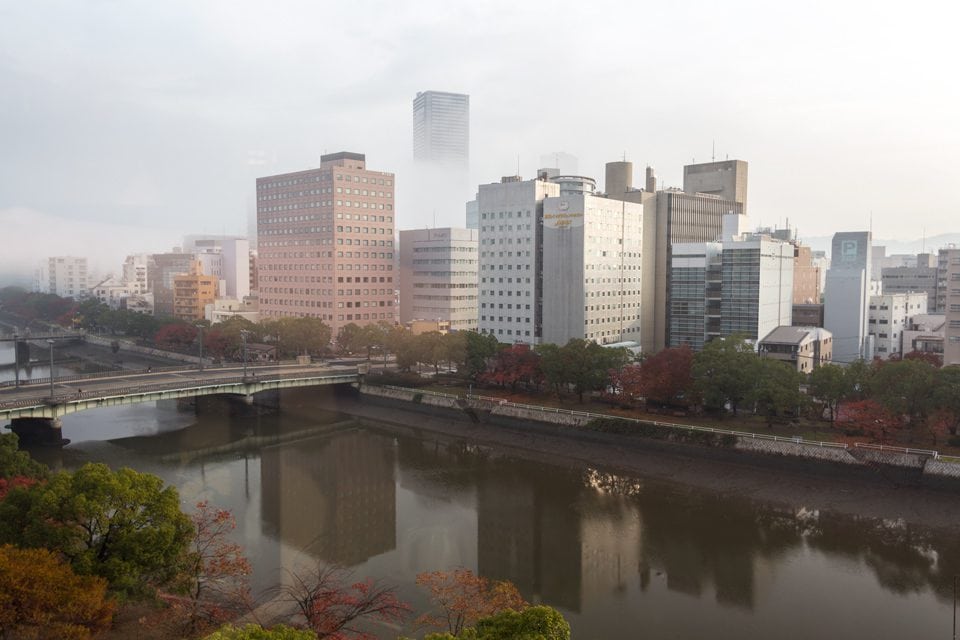
We arrived in Japan in Tokyo, but the first place we visited was Hiroshima. We decided to put it as the first place to visit on our Japan in November itinerary as it seemed the most logical way with our travel arrangements. Depending on where your flights to and from Japan are, you might do the same!
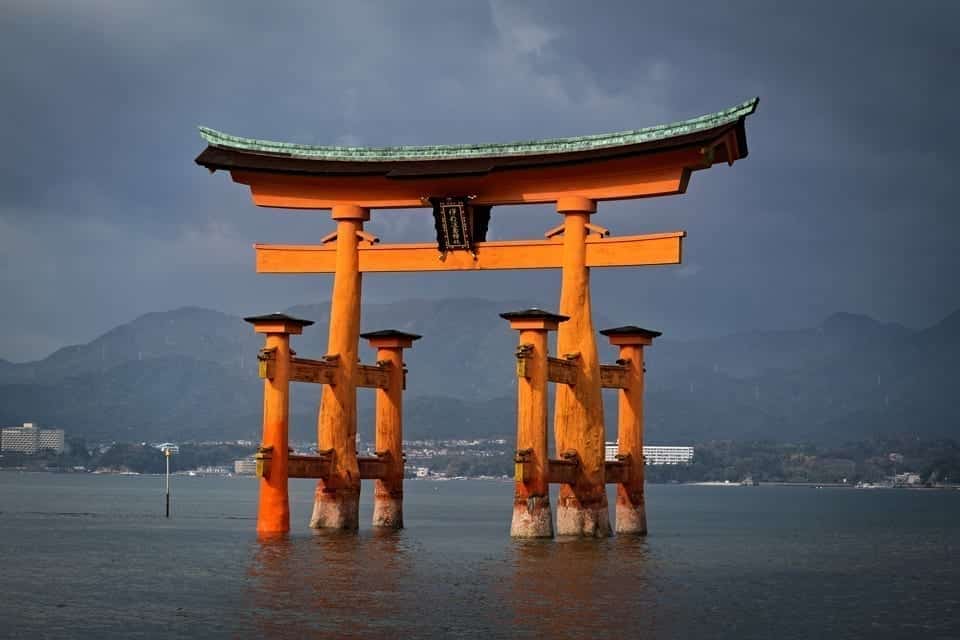
The morning of our first real day in Japan we went to Miyajima. Visiting the tiny island of Miyajima situated just a stone’s throw away from Hiroshima is a perfect way to start a trip around Japan in November.
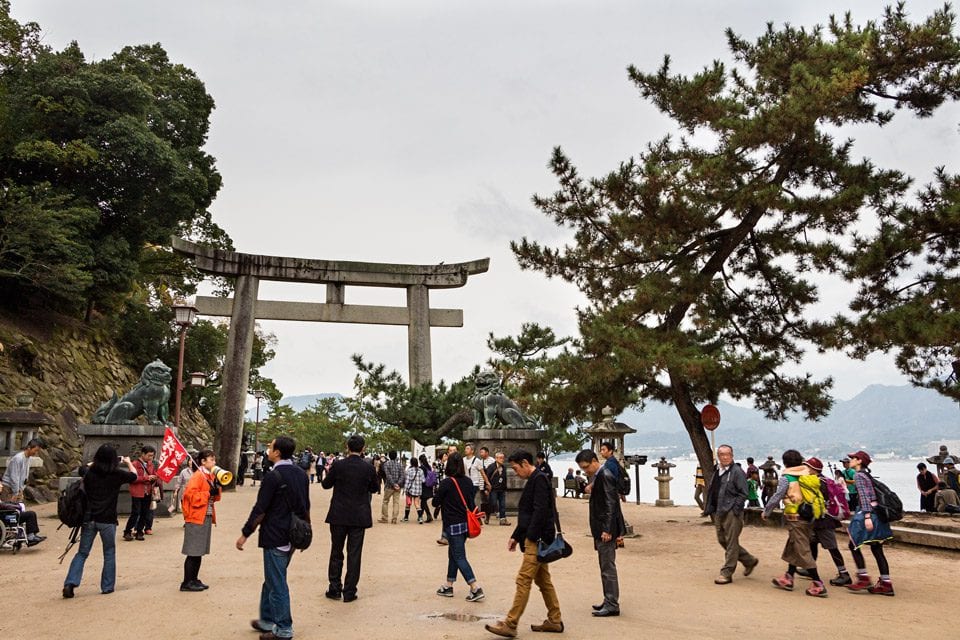
Miyajima is famous for its Itsukushima shrine and the Shrine’s floating torii gate. If you’d like to see the shrine illuminated, though, then leave Miyajima for the evening and explore Hiroshima in the morning.
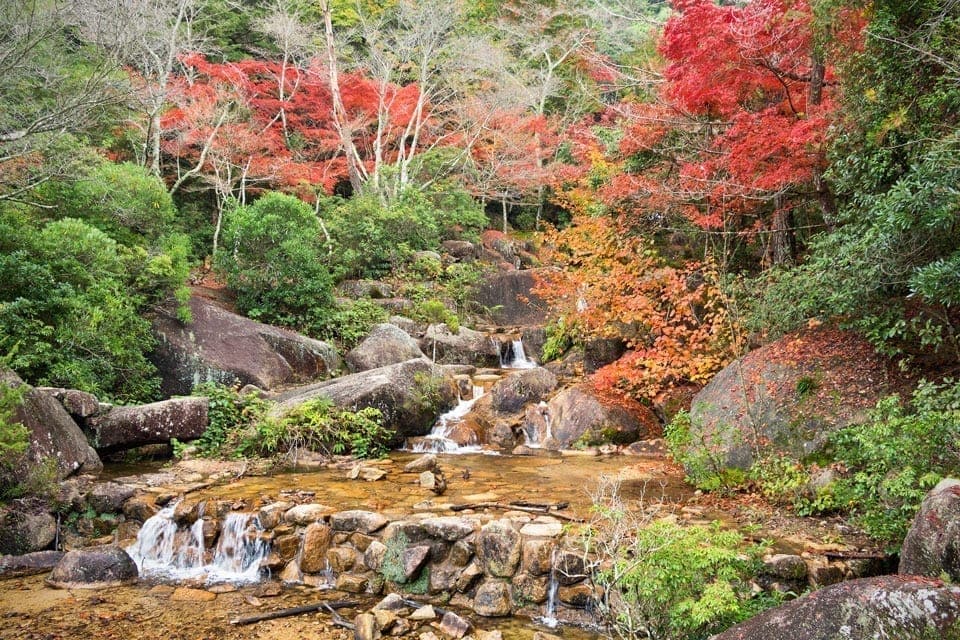
Miyajima is a romantic and dreamy place.
Even if it has a lot of daytime visitors, you’re still guaranteed to find beautiful and calm places to admire the amazing Japanese nature. Like this little waterfall that we visited – we just roamed some trails in the forest and stumbled upon it.
The spectacular autumn foliage that covers Japan in November makes for a great object of photography.
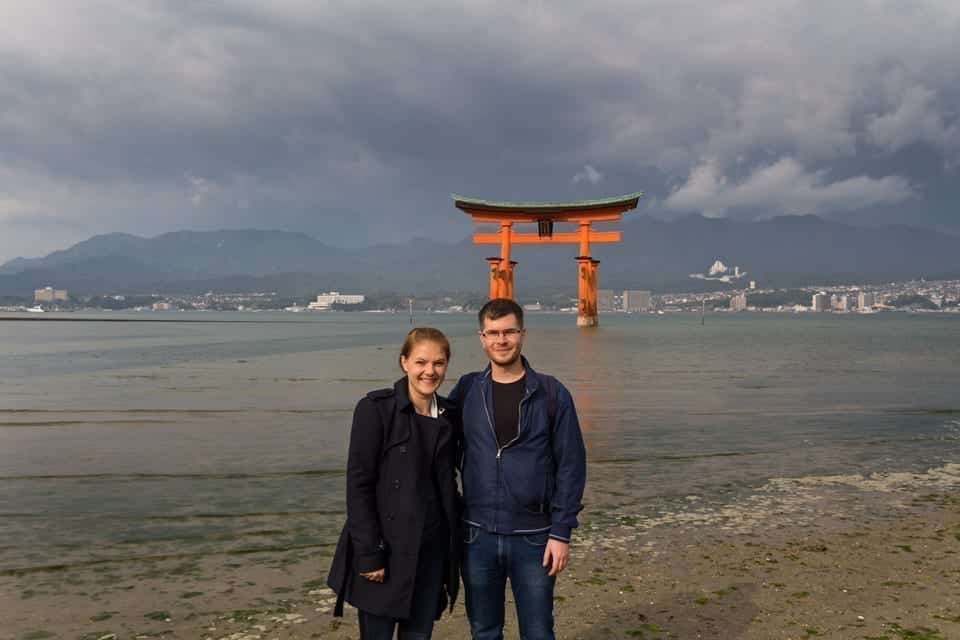
The vermilion torii gate of Itsukushima shrine is the number one object of photography on Miyajima island. And in fact, it is considered one of the most iconic views in all of Japan. The feeling that the gate seems to be floating on the sea is correct. The feeling that it grows out of my head is not 🙂
It was quite interesting to walk around the beach during the low tide and then see quite the deep sea later in the day.
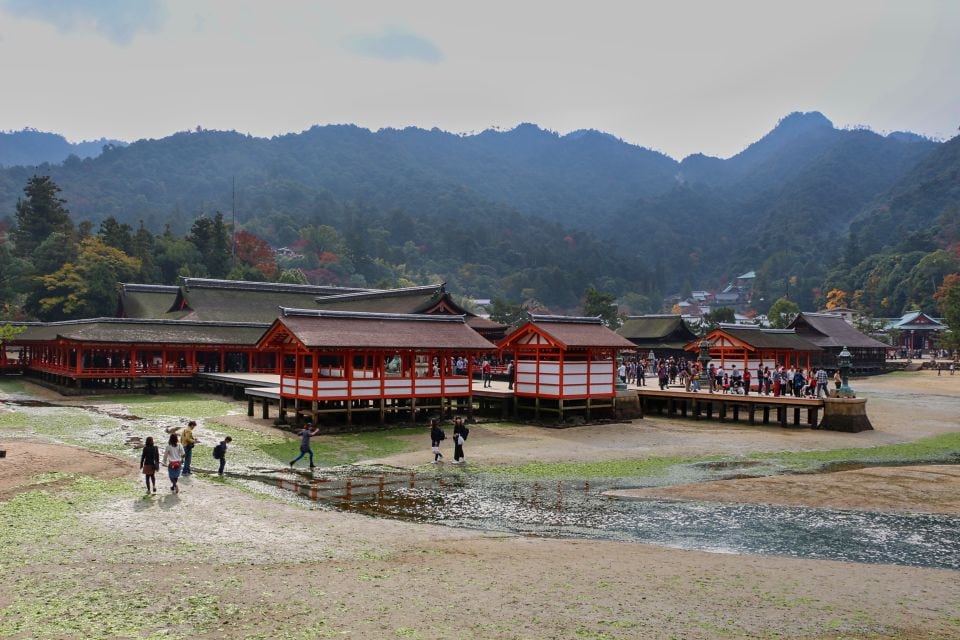
We started the day on Miyajima by exploring the temple, of course.
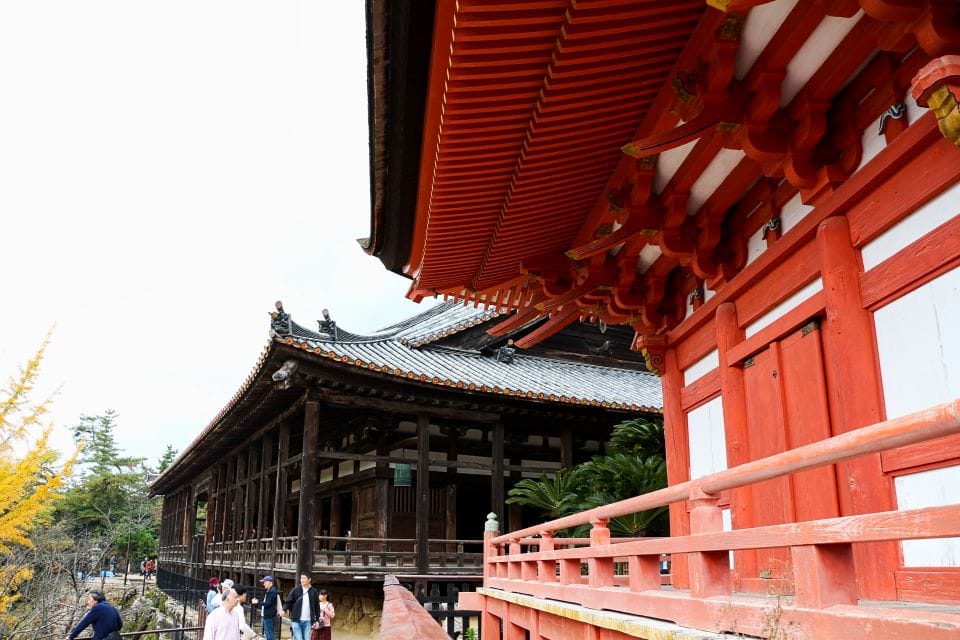
You have to take your shoes off to enter any of the buildings, so make sure to wear proper socks!
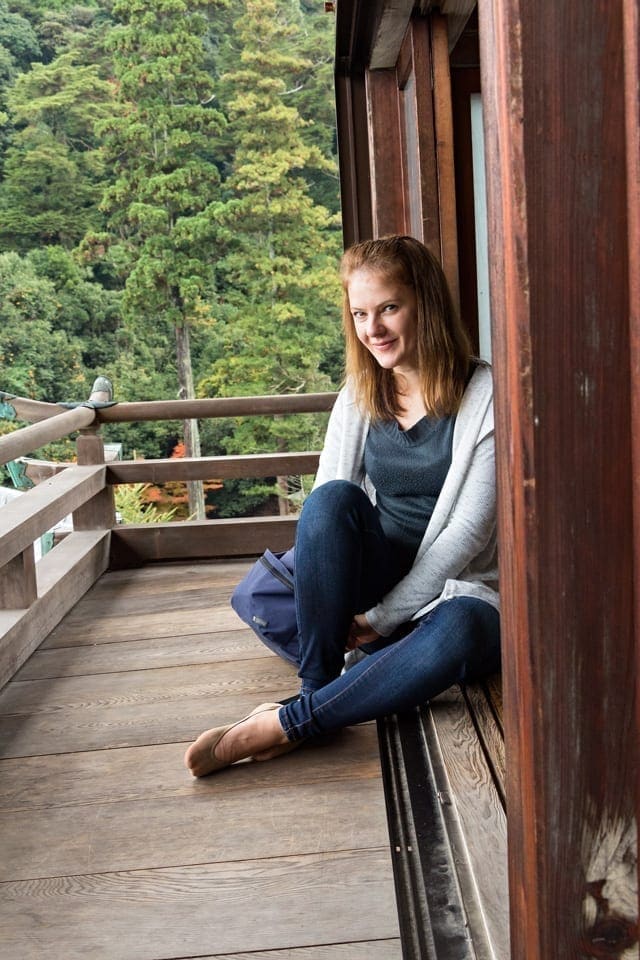
The shrine gave us an incredible sense of calm – even though there were tons of people roaming around, no one is loud and everyone is respectful. But the views of the foliage that November in Japan offers were just like a cherry on top.
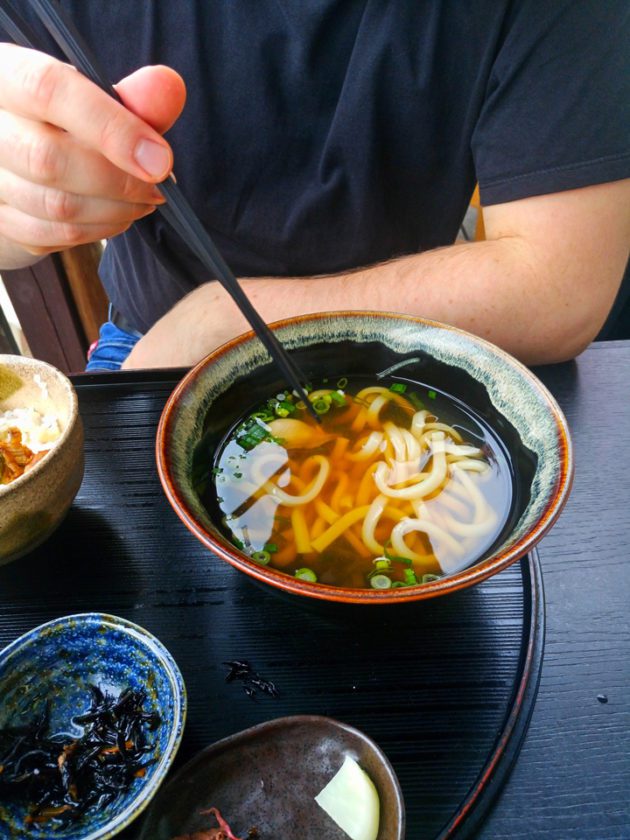
After an incredibly tasty lunch, we carried on!
The best thing to do in Miyajima is to wander leisurely while keeping your eyes and mind open. That way you’ll find many hidden gems this beautiful island offers.
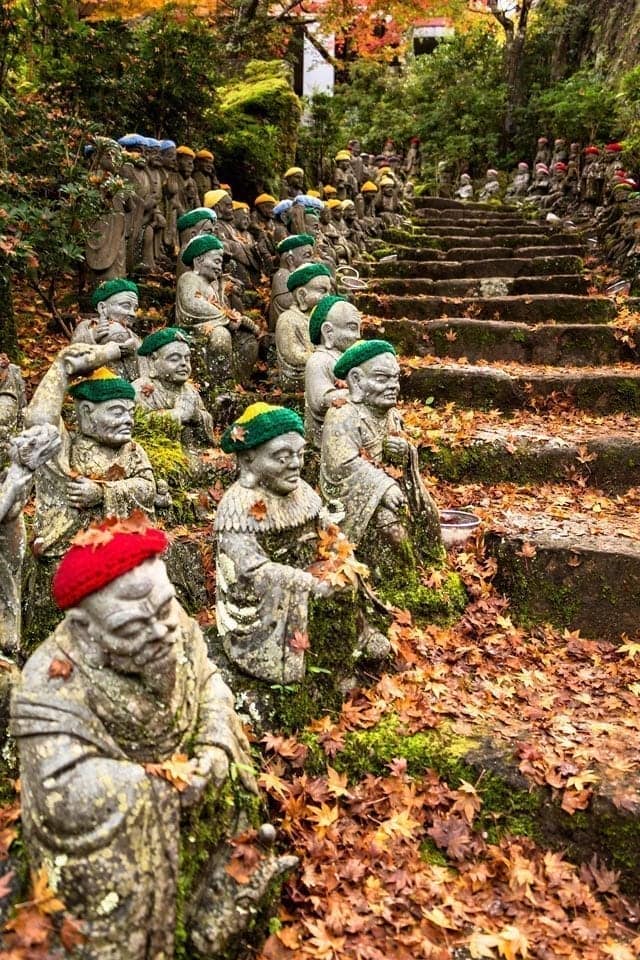
Like these little monks, for example. They are not really a “hidden gem”, as you might have seen them mentioned already. Still, we didn’t meet too many people here and there are so many of them! And their decorations are changed quite often, which is quite cool.
To fully experience the best of Miyajima, we suggest spending a night in a ryokan. If it doesn’t work with your itinerary, though, you can do it like we did and enjoy the ryokan in Gora.
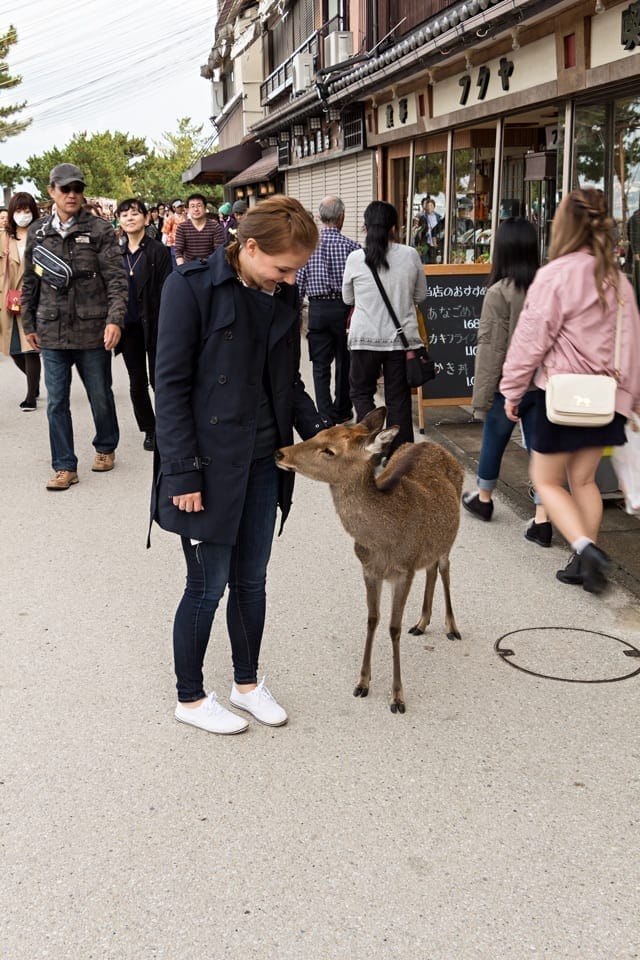
Japan is always full of exciting and surprising objects for photography.
Did you know Miyajima has free-roaming deer in the streets? You don’t have to specifically visit Nara for that!
These adorable animals love to pose for a picture with you. They also love eating paper, so keep your travel documents safe 🙂 We had never been in such close proximity to deer before so it was quite an interesting experience.
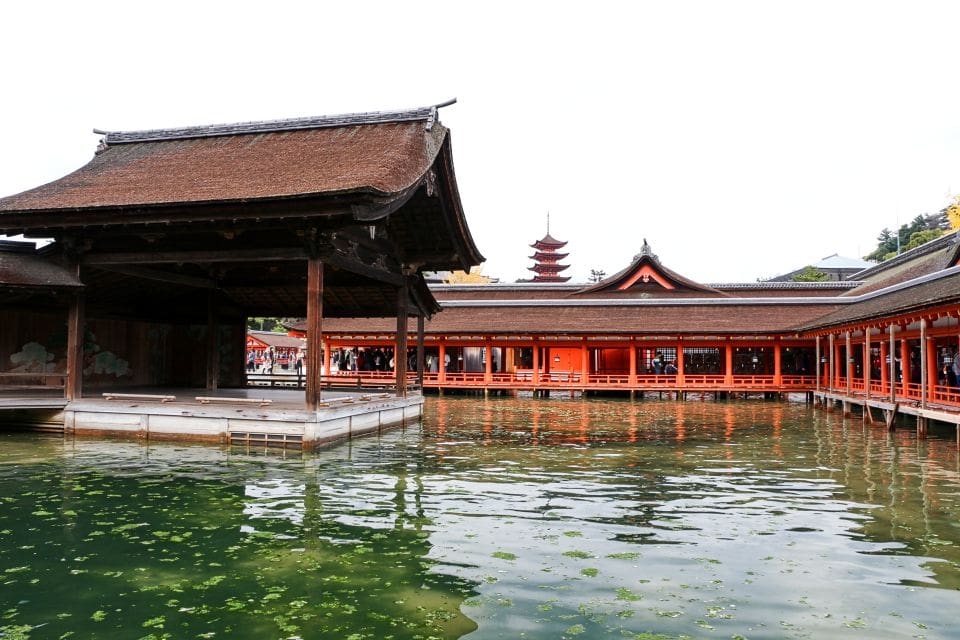
We spent quite a long time just roaming around Miyajima – there is so much to see there! Honestly, if you can spend a night on the island, I definitely recommend you do it. Plus, the shrine gets illuminated when it’s dark – I believe the sight is incredible.
When we returned to Hiroshima, it was already late afternoon and getting dark.
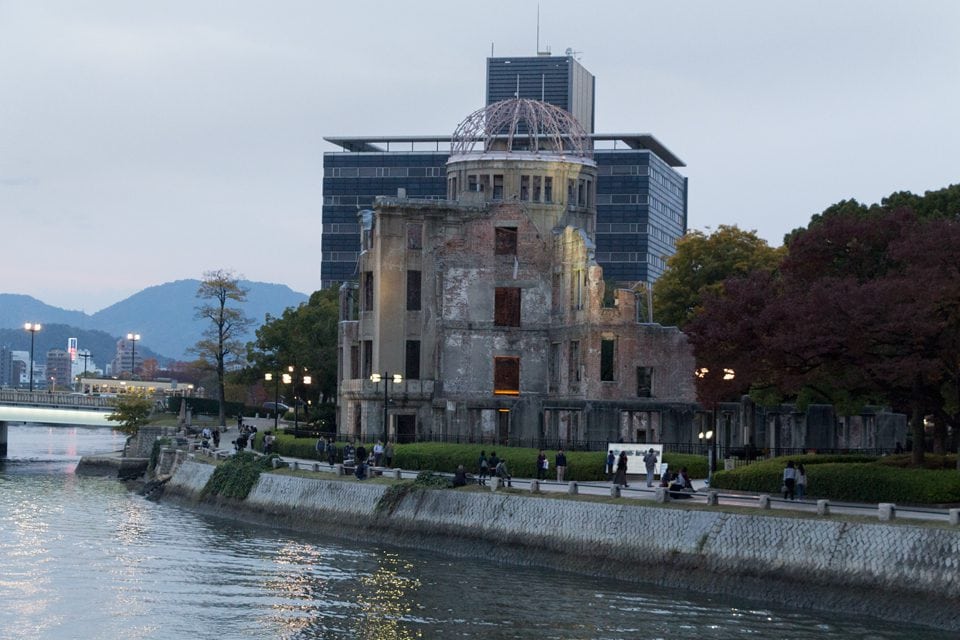
Our first stop was the Hiroshima Peace Park and the Hiroshima Peace Memorial Museum which is a UNESCO World Heritage Site. We recommend that you visit it, although maybe better not with very young children, as there are actual parts of people in the exhibition.
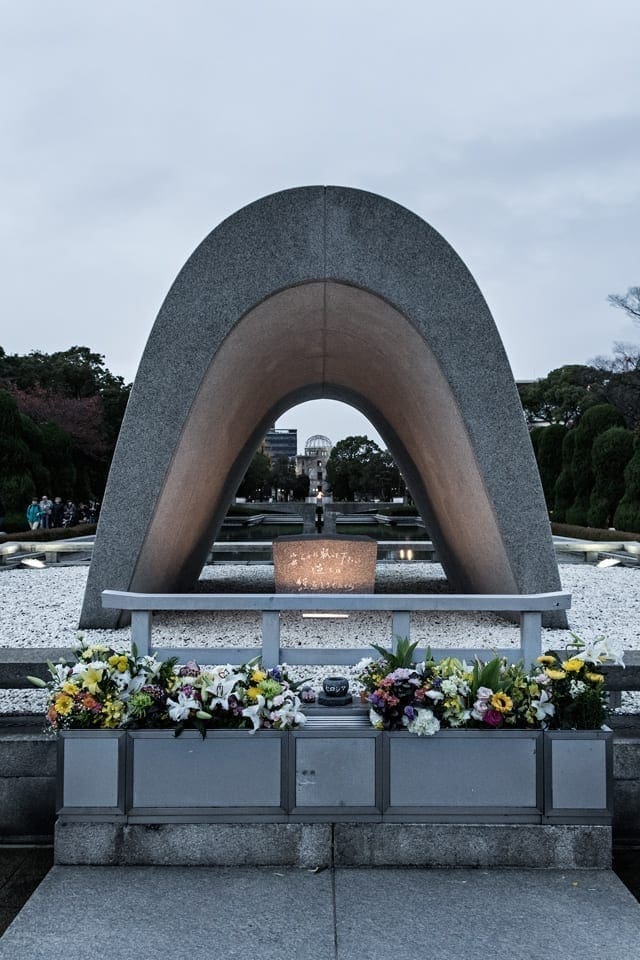
Hiroshima is a bit of a contrast to the romantic Miyajima. The city became the target of the world’s first A-bomb in 1945. The Peace Memorial Park in the city centre is a solemn place commemorating its victims.
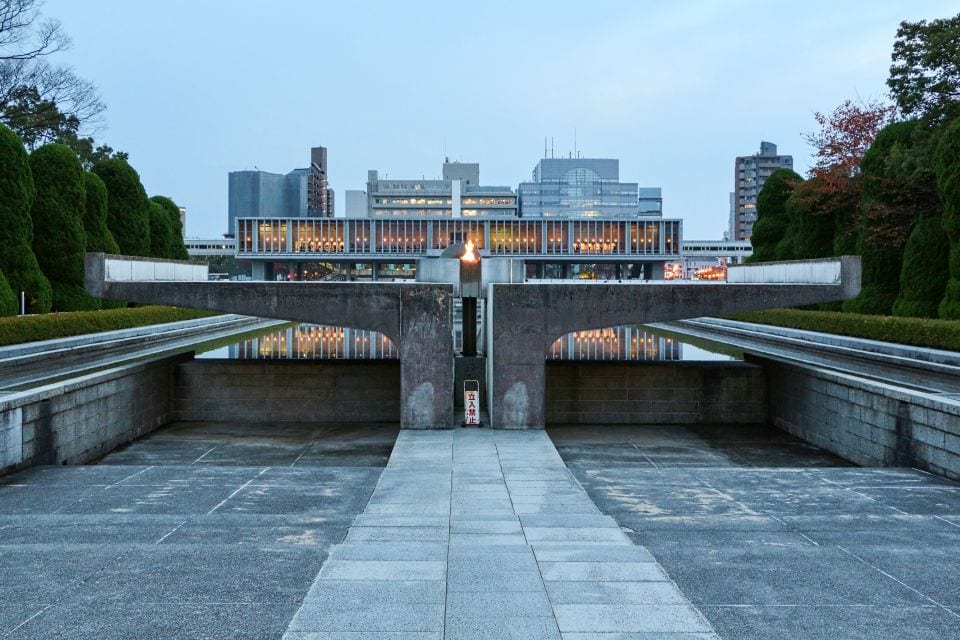
The museum is a very emotional place. There are different exhibits from the aftermath of the bombs. You can see peaces of people, things, houses, and so many more things displayed. There are stories from survivors and what they had to go through. It really is quite a heavy place, but at the same time, so educational that I just must recommend it if you’re planning to go to Hiroshima.
After the museum, we walked a bit more around the park.
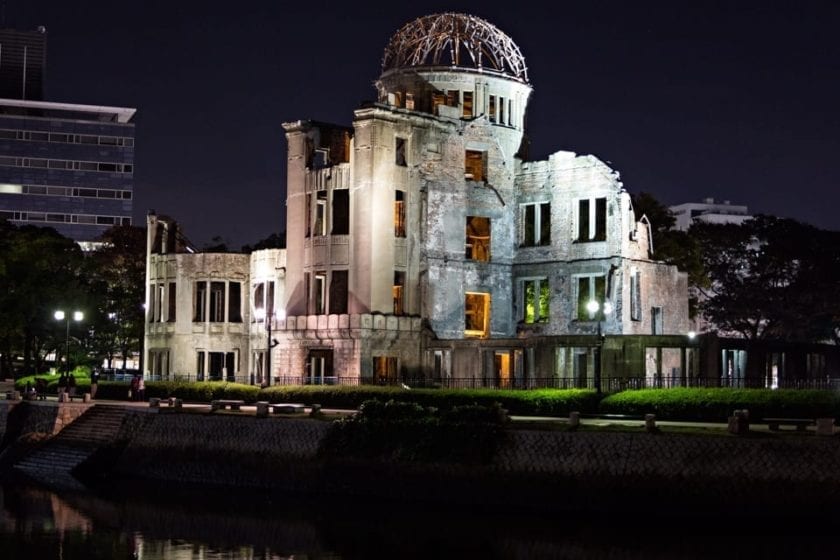
The Atomic Bomb Dome is a great reminder of what a disaster can strike at any moment.

Although Hiroshima is a solemn place, it still just wants to give you hope for a better future. So if you’re doubting if you should visit it, we are confident that you should!
Next stop – Kyoto, one of the most iconic places for Japan photography
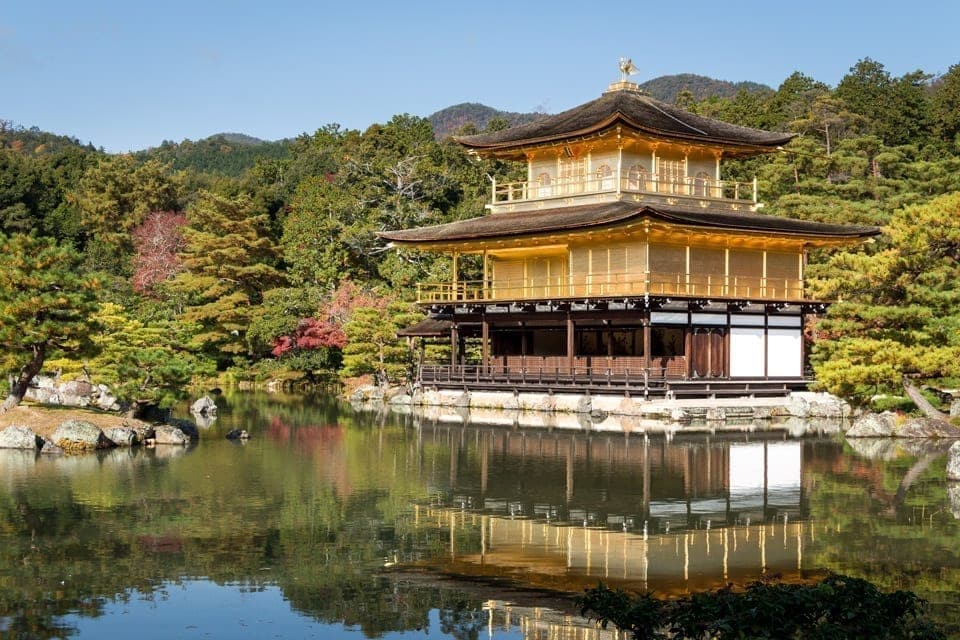
Kyoto is the most beautiful Japanese city, and it’s not a subjective opinion.
With more than two thousand temples and shrines, as well as parks, gardens, museums, restaurants, and bars, there is simply something for everyone.
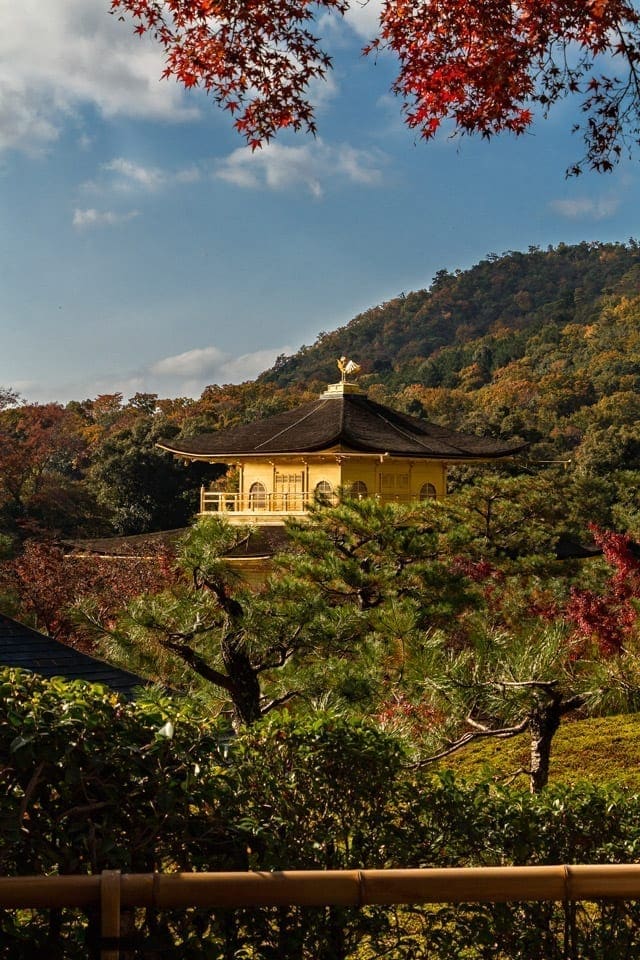
The Kinkaku-ji temple, one of Kyoto’s top attractions, is so shiny you don’t wanna forget your sunglasses, seriously 🙂 We had trouble taking any pictures with the Kinkaku-ji in the background, as the sun was shining straight into our eyes!

If you go a bit off the most popular sites, you can find some quiet and cute temples and buildings. Like this one, for example, just next to the Ryoan-ji with its mysterious rock garden with 15 scattered rocks and no plants.
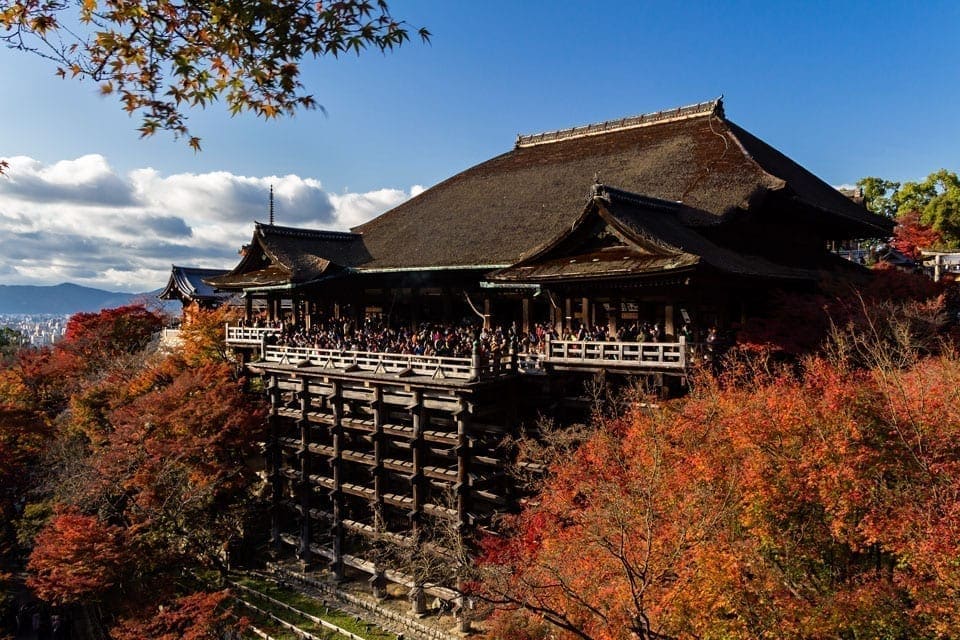
Kiyomizu-dera’s front facade is supported by a 13-meter-tall wooden stage. During the Edo period, there was a funny belief that leaping off this stage would make your wish come true. The Edo period is over, so we definitely do not recommend trying it nowadays 🙂
If you go to Kiyomizu-dera in the evening in November, you’ll probably have a chance to see it illuminated – the Southern Higashiyama districts holds special illuminations of the temples in November.
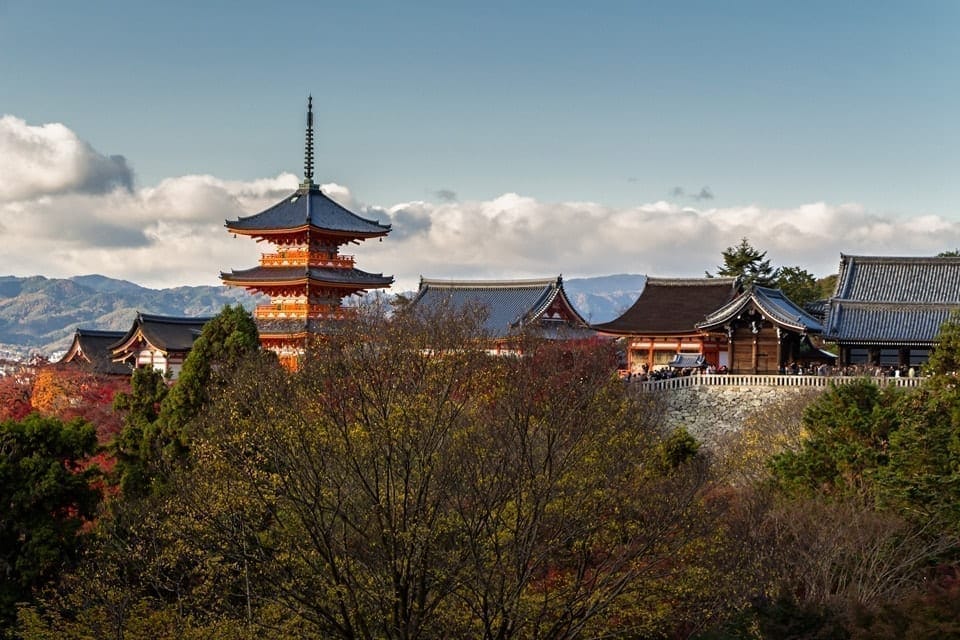
While the stupendous Kiyomizu-dera temple in Kyoto’s Southern Higashiyama district might be its number one attraction, there’s much, much more.
You can easily spend half a day exploring this superb neighbourhood. Crooked streets, cosy little teashops, and various temples, small and grand, are all waiting to be discovered.
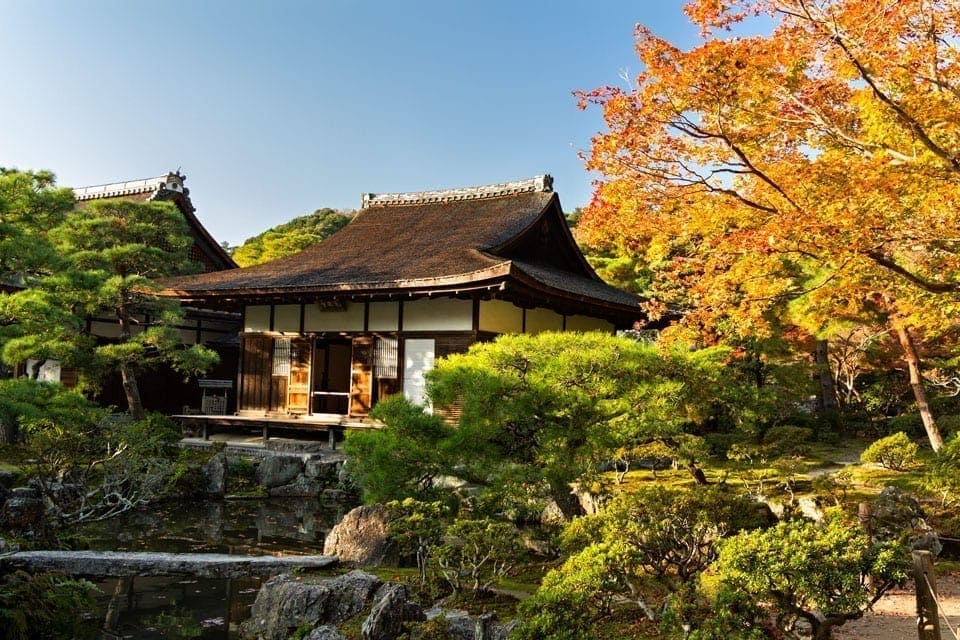
Discovering the beauty of Kyoto’s temples is among the top experiences this magnificent city offers.
If you’re visiting Japan in November, the beauty is enhanced by the autumn foliage.

If discovering the beauty of Kyoto’s temples is one of the top experiences, then discovering the little hidden gems like this one is the creme de la creme.
The best thing about them – you’re likely to have them all for yourself, without the usual crowds found at the most popular spots.
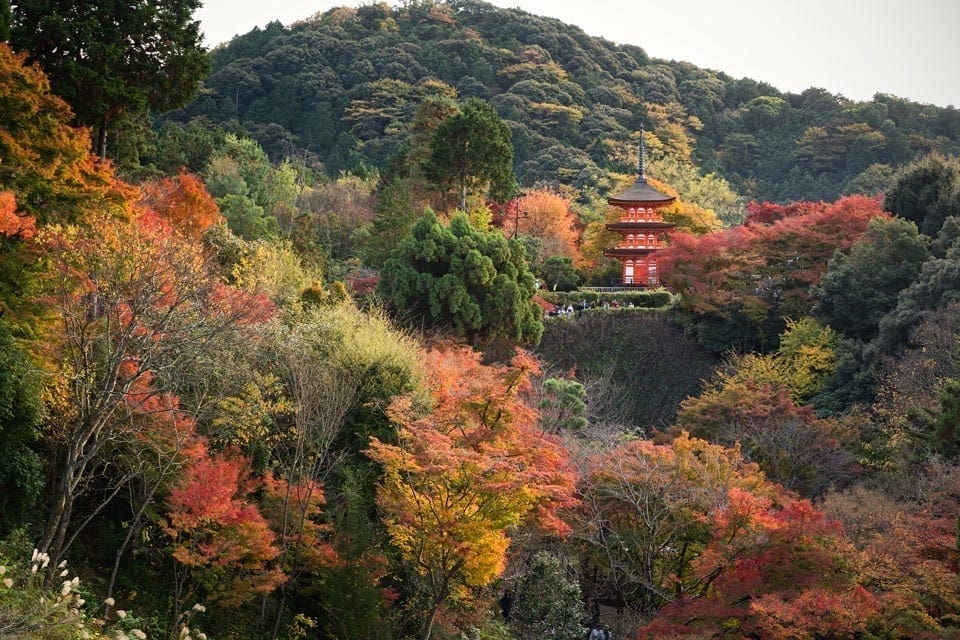
When is the best time to visit Kyoto?
The easy answer is – spring and autumn.
We visited Japan in the second half of November when all the trees were dressed in the beautiful colours of crimson, red, and orange.
Watching the autumn foliage is a very popular activity not just in Kyoto, but in all of Japan. There are actually quite a few
Not surprisingly, the colourful trees are also a perfect object for some typical photography from Japan.
Visiting in spring, though, lets you enjoy Japan during one of the most beautiful – and thus most popular – seasons, which is when the cherry blossoms are in full bloom.
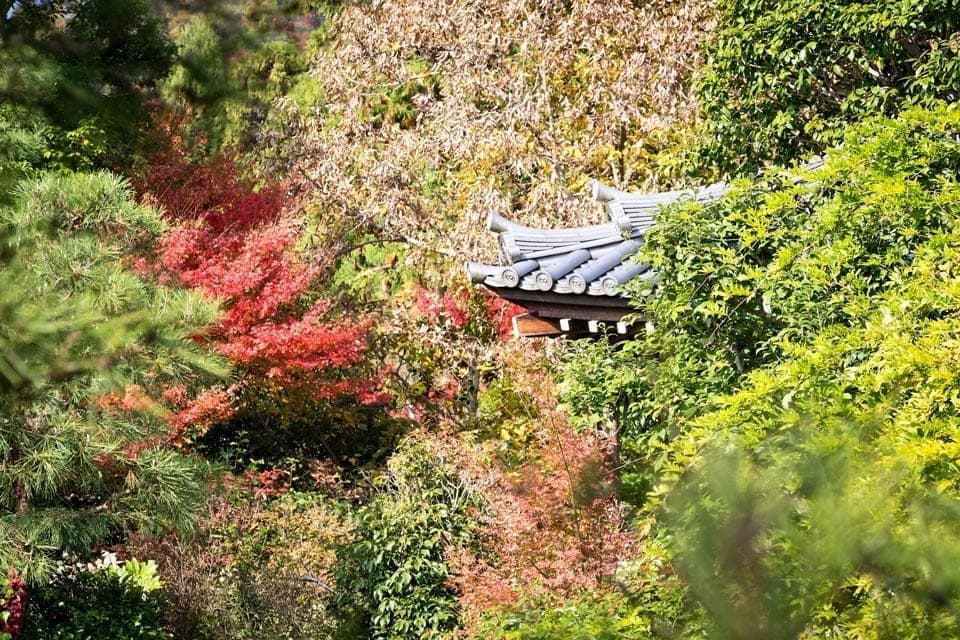
Kyoto is stunning. And yes, Kyoto is also popular among visitors and gets crowded. Yet, if you venture a bit off the beaten path, various little hidden gems are waiting for discovery.
We literally got stuck in a pedestrian traffic jam on a street in Southern Higashiyama.
We also found this little temple in the picture above at the very same southern Higashiyama and had it all to ourselves.
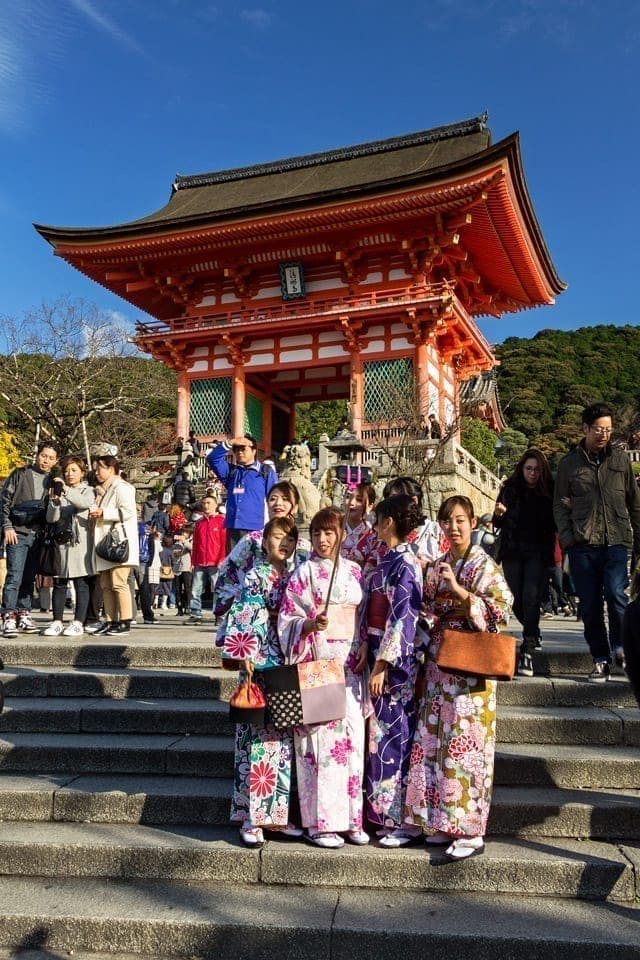
While walking through Southern Higashiyama…
This is Kyoto’s top district for visitors, with many major attractions as well as various hidden gems. There are tiny little unknown temples everywhere – you just have to wander in and explore.
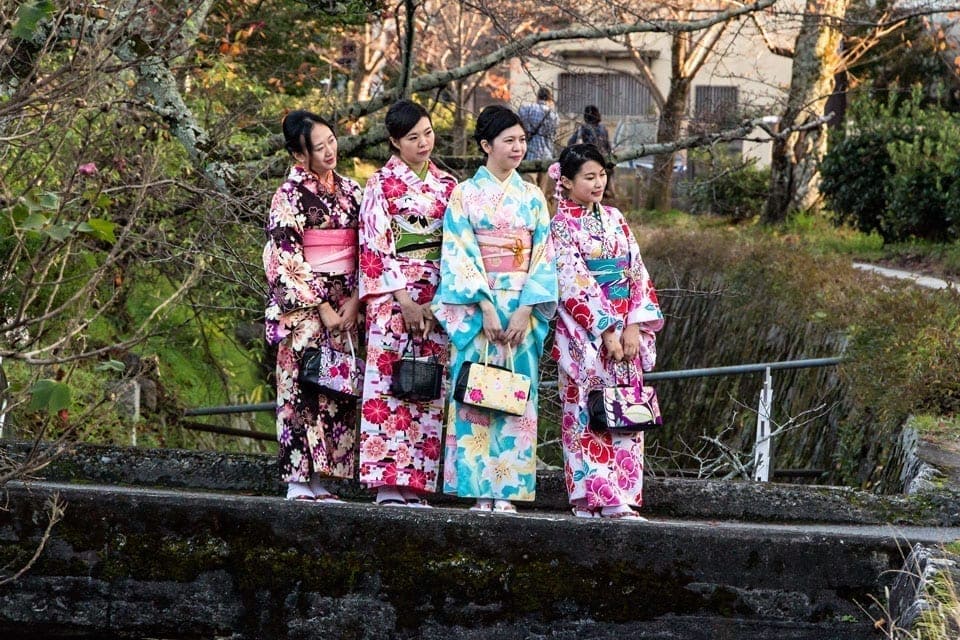
The Philosopher’s Path, starting near Ginkaku-ji temple, is a popular walking trail in this district and one well worth taking. The beautiful autumn foliage nicely covers the path.
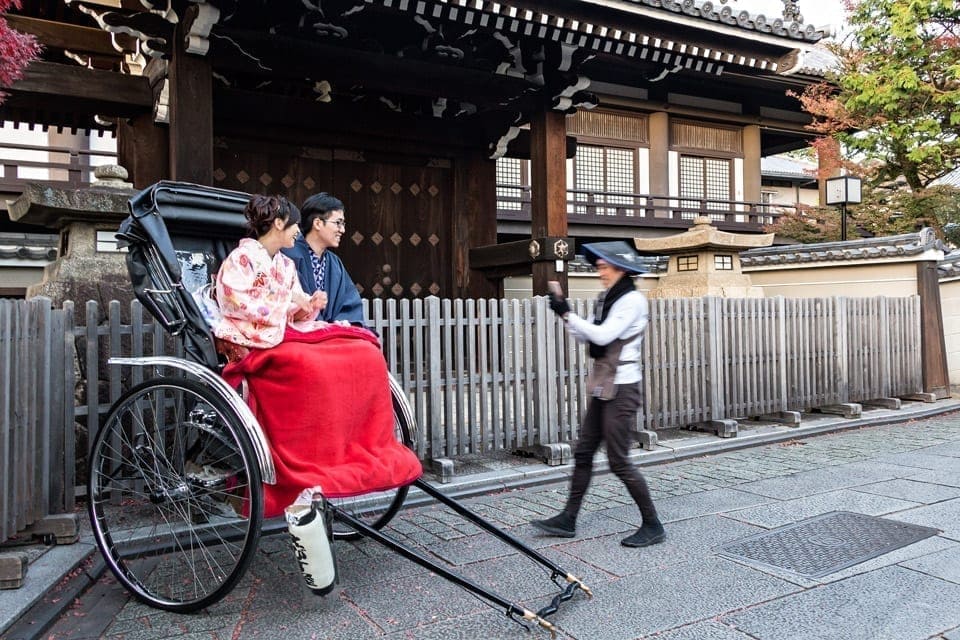
Strolling around the Northern and Southern Higashiyama districts is one of the most rewarding experiences Kyoto offers.
Both districts are very pedestrian-friendly and abound with magnificent temples, cosy tearooms, superb restaurants, and a very pleasant atmosphere of “hey, this is how I imagined Japan”.
And if you get tired of walking, why not try a rickshaw?
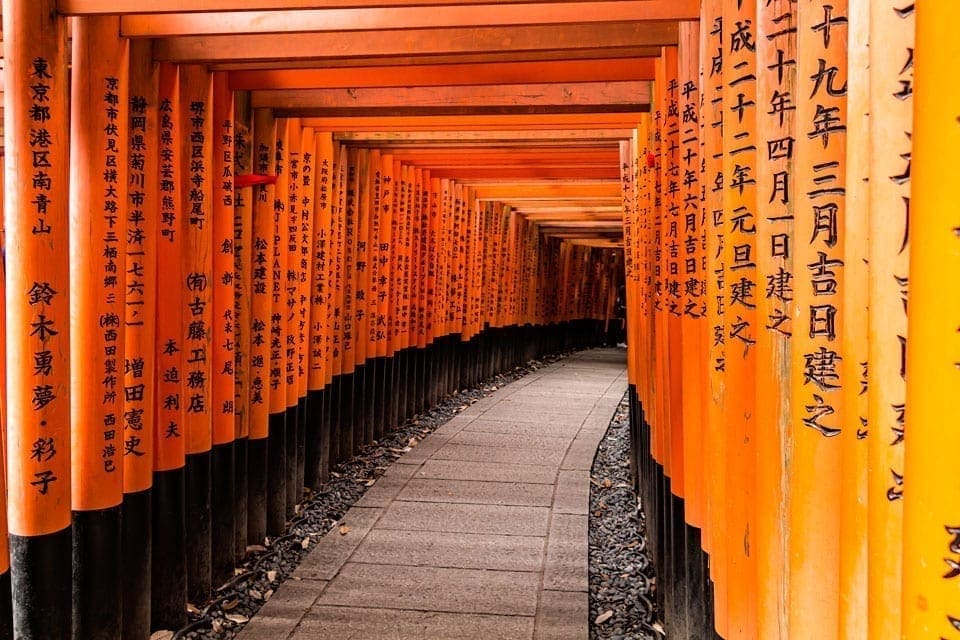
The numerous torii gates of this shrine located in southern Kyoto form a sort of mystical arcade. Walking through them is almost a fairy-tale-like experience.
It is almost impossible, though, to take images without people in the main walkway. The picture above was taken in a sort-of side “tunnel”.
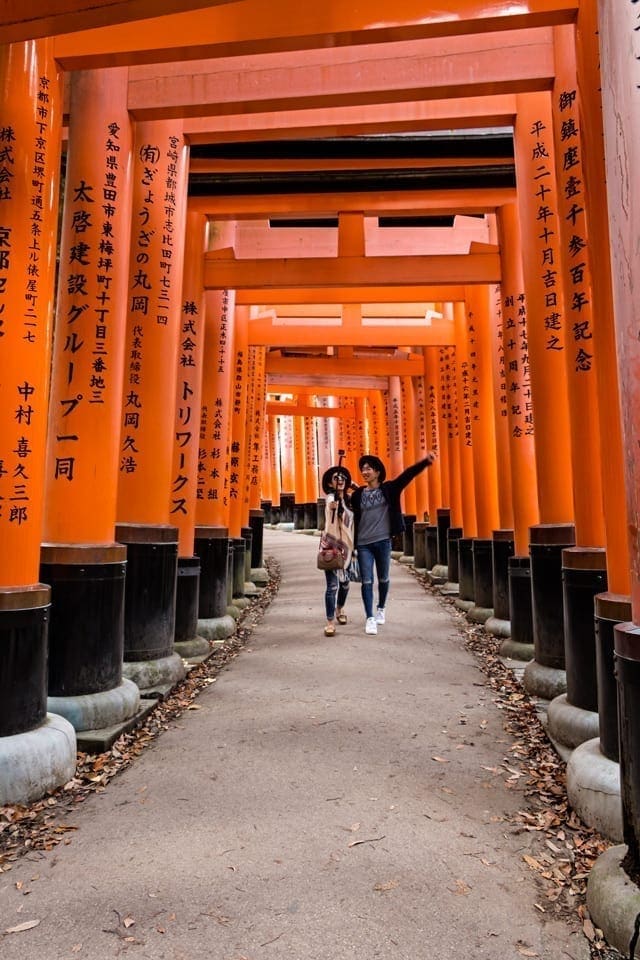
The Fushimi Inari shrine is dedicated to the Shinto goddess of rice, Inari. We actually saw a part of a festival called Shinjo-sai – it’s a ceremony of appreciation for the harvest and prayers for peace for the nation.
Each of the gates was donated as an offering by an individual or business, with the larger the gate, the larger the donation. There are also many statues of foxes next to the gates, as foxes are believed to be Inari’s messengers.
Walking through these gates is an absolutely unique and unforgettable experience. And if you’d like to take some amazing Japan photos, this is one of the best places to visit.
Whether you decide to go for a selfie as this young couple did or capture the torii gates on their own, you can’t go wrong – Fushimi Inari is one of Japan’s iconic sights and a fabulous place for photography.
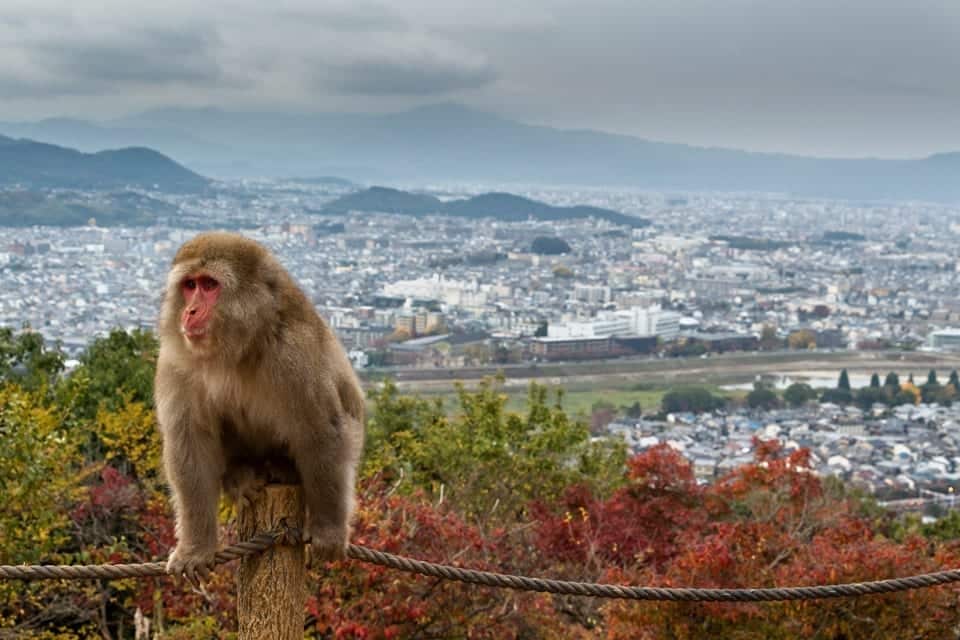
Not your typical snapshot from Kyoto, you’d think?
Well, Japan is a land of contrasts and surprises.
This cheeky macaque was posing nicely for a picture with the whole Kyoto in the background. We had this cool view and met the friendly monkeys in Arashiyama Monkey Park.
Arashiyama is among the top districts to visit in Kyoto, with a beautiful bamboo forest being another of the highlights. When we visited, it was incredibly crowded – to the point where we actually couldn’t get that traditional picture of the Arashiyama bamboo grove and got overwhelmed by the amount of people.
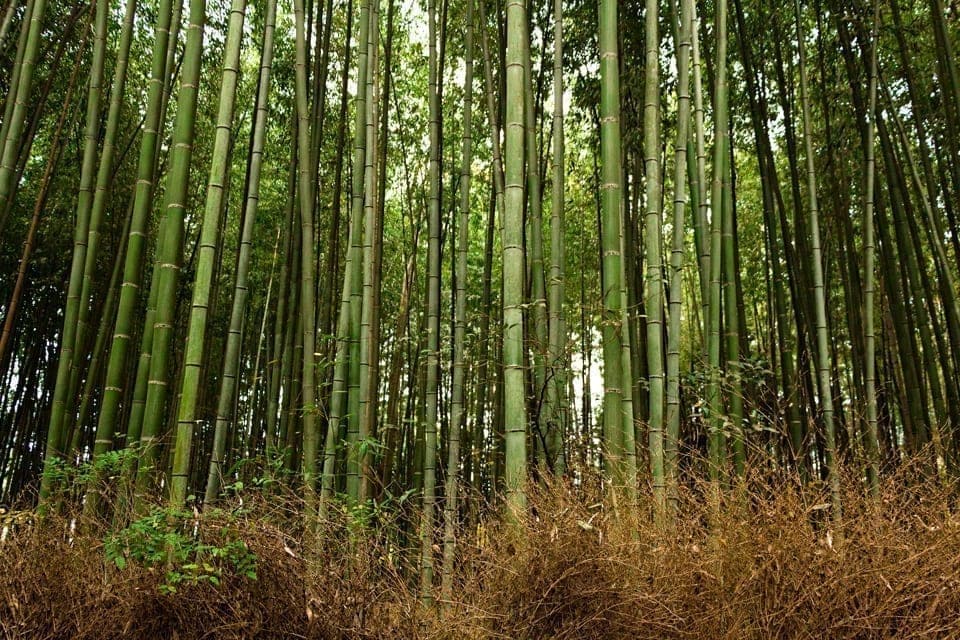
Moving on to Ryokan, onsen, Mt. Fuji and black eggs cooked in sulfurous volcanic water
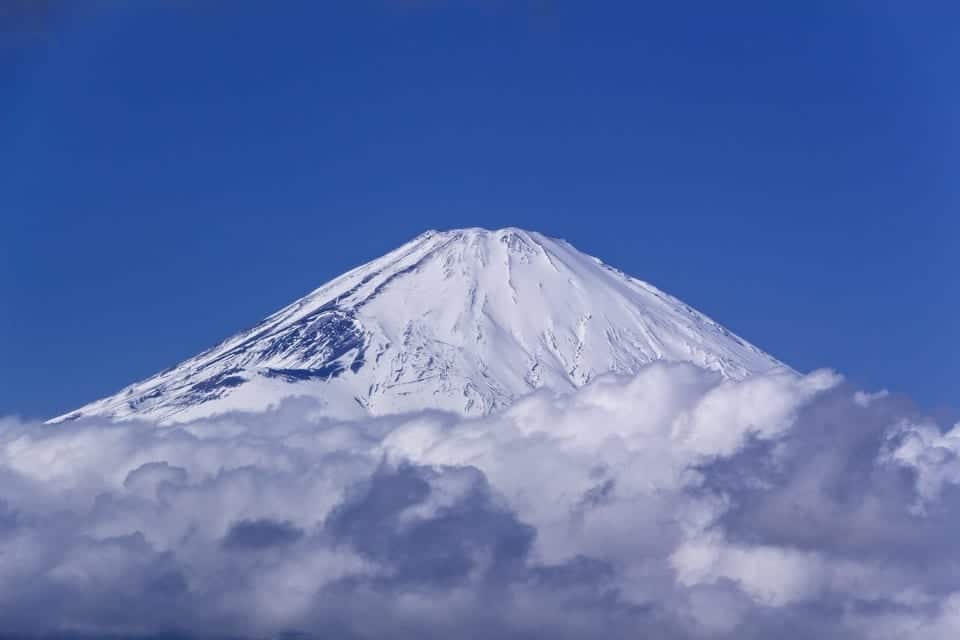
An active volcano, one of Japan’s three sacred mountains, and an iconic sight of the Land of the Rising Sun – that’s Mt. Fuji.
You may catch a glimpse of it from the Shinkansen, you may see it on clear days from Tokyo and you may visit the beautiful Fuji Hakone National Park.
Unfortunately, the only times when Fuji decided to show his magnificent beauty were when we were on trains or buses. That’s Japan in November for you – there might be rain. And snow!
All of these experiences are incorporated into our 10 day Japan itinerary.

Fuji Hakone National Park is our favourite part of our 10-day Japan itinerary.
We enjoyed the beautiful nature, relaxed in the onsen while snowflakes were falling into the hot tub, and feasted on an amazing kaiseki dinner.

What’s the weather in Japan in November like, you ask?
Well, for us it proved to be unpredictable! According to the people we met in a train station in Odawara, it snowed there for the first time in 50 years (at least in mid-November). 2 days before this, we were wearing t-shirts in Kyoto!
So, it pretty much was an adventure – the public transport didn’t work, as it wasn’t ready for snow, the line for the taxis was at least 4 hours long, and it was hard to communicate because English in Japan is very limited.
In the end, though, we made it to the ryokan. And enjoyed the warm foot bath while sipping wine very, very much, haha.
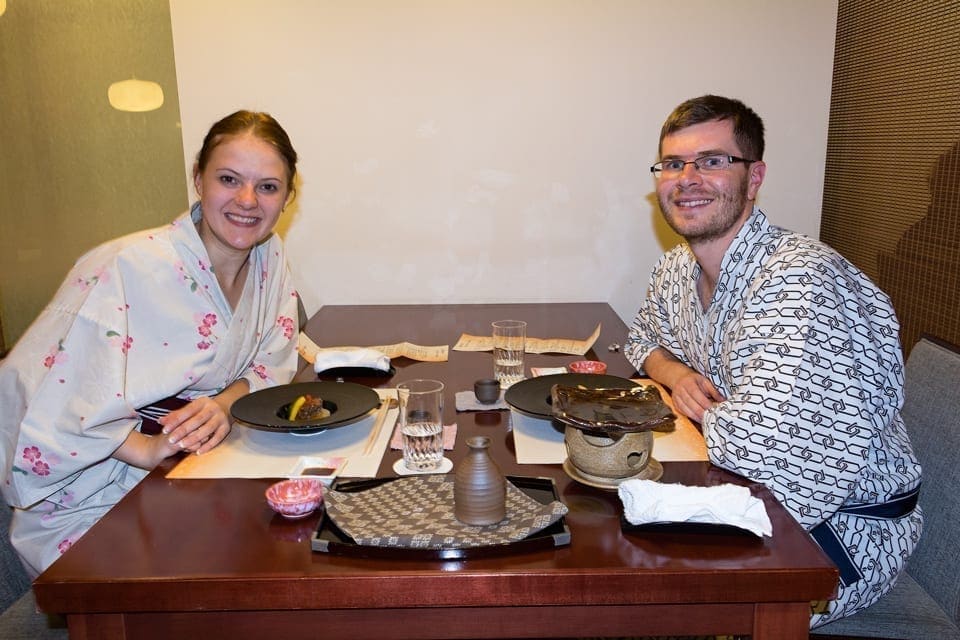
Staying in a ryokan is an unforgettable experience and definitely one of our favourite ones from the whole Japan trip.
Savouring gourmet meals of Japanese cuisine, relaxing in the hot tubs, and generally being pampered – that was our ryokan experience.
Sounds great? It surely was!
We have a whole post about the rules of visiting ryokan and onsen, you may check it out.
Spoiler alert: it will make you want to stay in a ryokan! 🙂
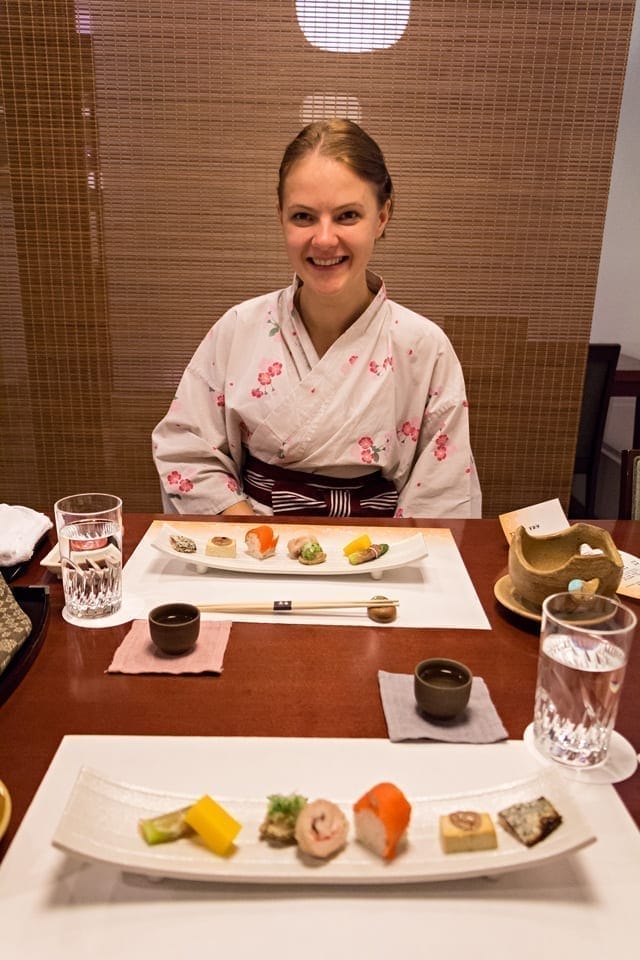
Kaiseki (the Japanese haute cuisine) meals are served in a ryokan – and one of the Japanese foods you definitely need to try.
The multi-course dinner and breakfast that we had were a feast for our eyes and ecstasy for our taste buds.
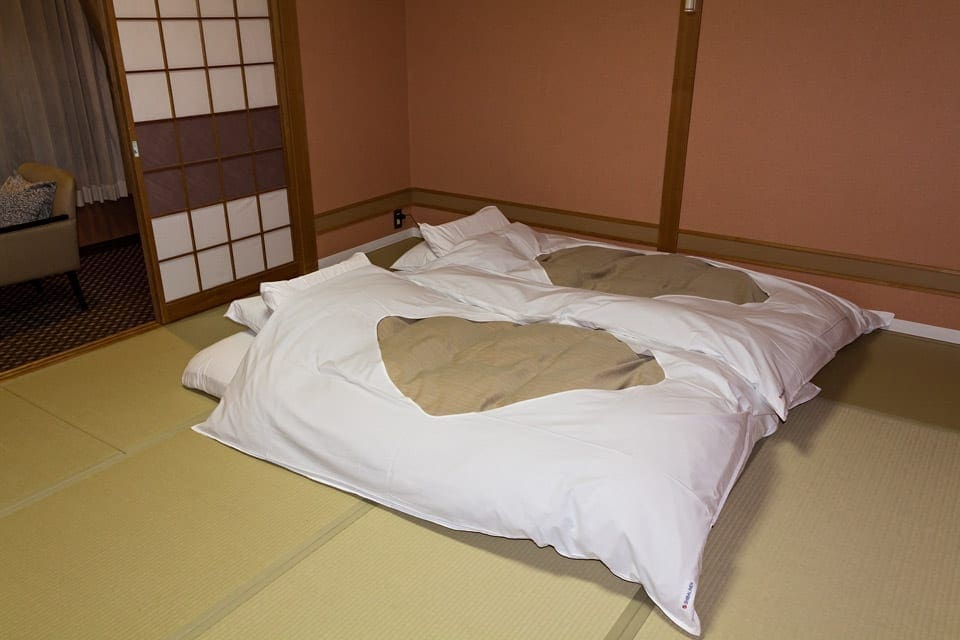
Ryokan rooms are rather minimalistic in their design, yet they feel very homey and cosy.
Tatami mats cover the floor (take off your shoes before walking on them!), futon beds make for a great night’s sleep and a small table with legless chairs is perfect for enjoying a cup of Japanese green tea.
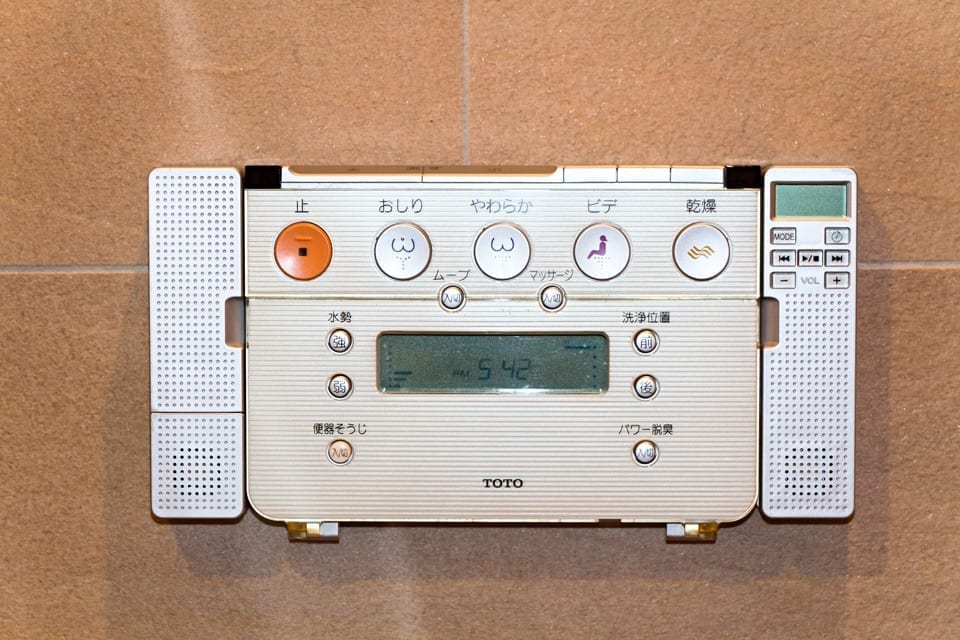
A Japanese toilet is a masterpiece of high-tech engineering.
It has almost as many push-buttons as a modern airliner’s flight deck 🙂
A button for lifting the lid, a button for switching on the seat warmer, a button for regulating the intensity of the seat warmers, a button for switching on the spray nozzles, a button for regulating their intensity, a button for switching on the music…
Don’t worry, it all comes with a manual 🙂 Unfortunately, the manual was only in Japanese…
The last stop on our trip to Japan in November – Tokyo!
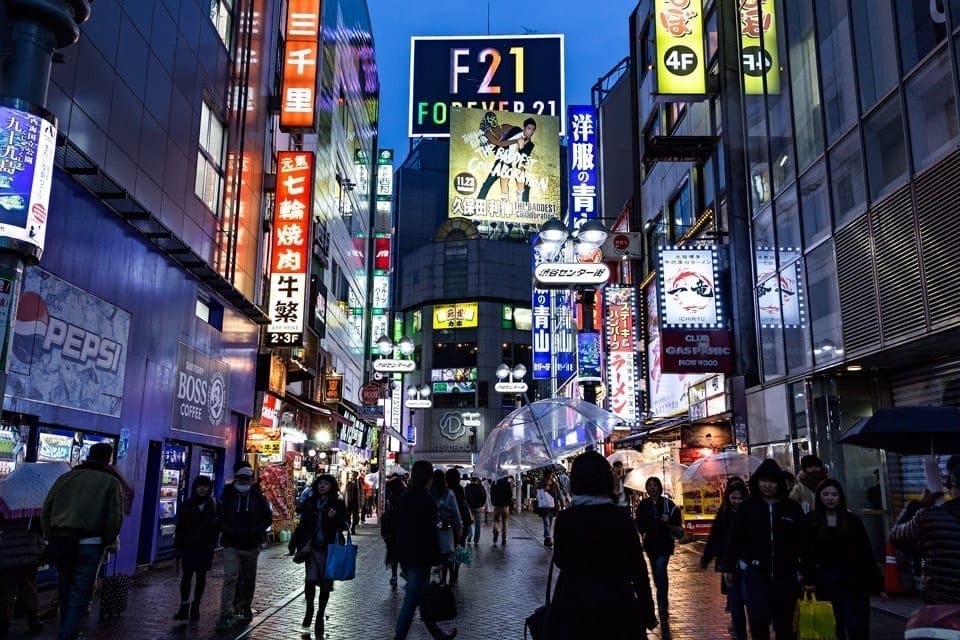
Is this how you imagined Tokyo?
For us, it was.
The picture is from Shibuya, a modern district with plenty of shopping, dining, and entertainment options, and, yes, plenty of shiny neon lights as well.
Shibuya and the neighbouring Shinjuku are also perfect places for street photography from Japan.
And, if a skyscraper is not your thing, nearby is a vast Yoyogi park with the splendid Meiji Jingu shrine.
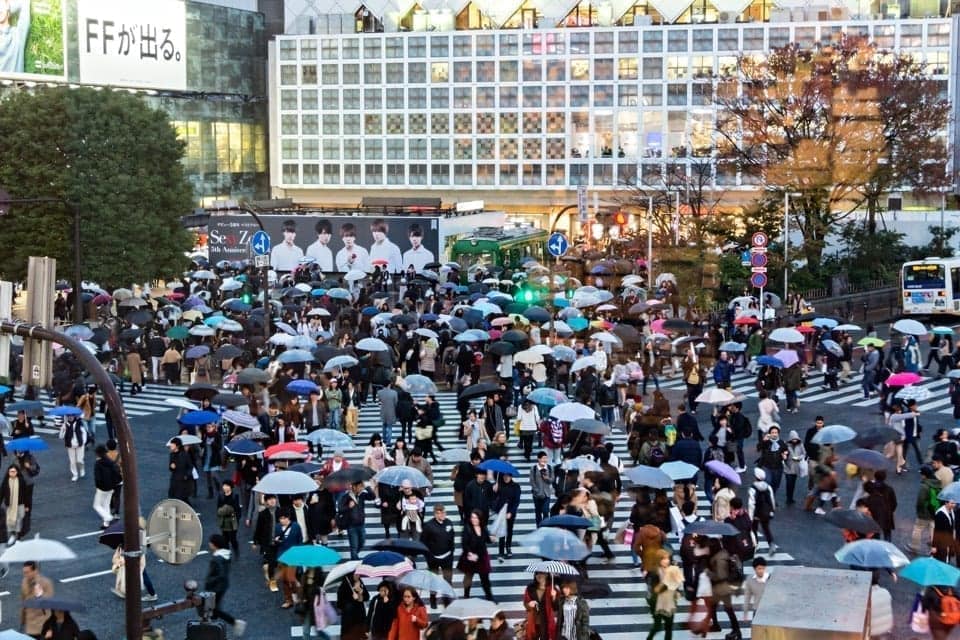
Up to three thousand people cross at a time, sharing the modest space of the zebra crossing, weaving, and avoiding others with a nonchalant dexterity.
That is the Shibuya crossing, the world’s busiest pedestrian crossing.
Famous from Lost in Translation movie, you will definitely not get lost in Tokyo with our 10 day Japan itinerary 🙂
Don’t forget to check out the Hachiko statue which is close to the train station in Shibuya!
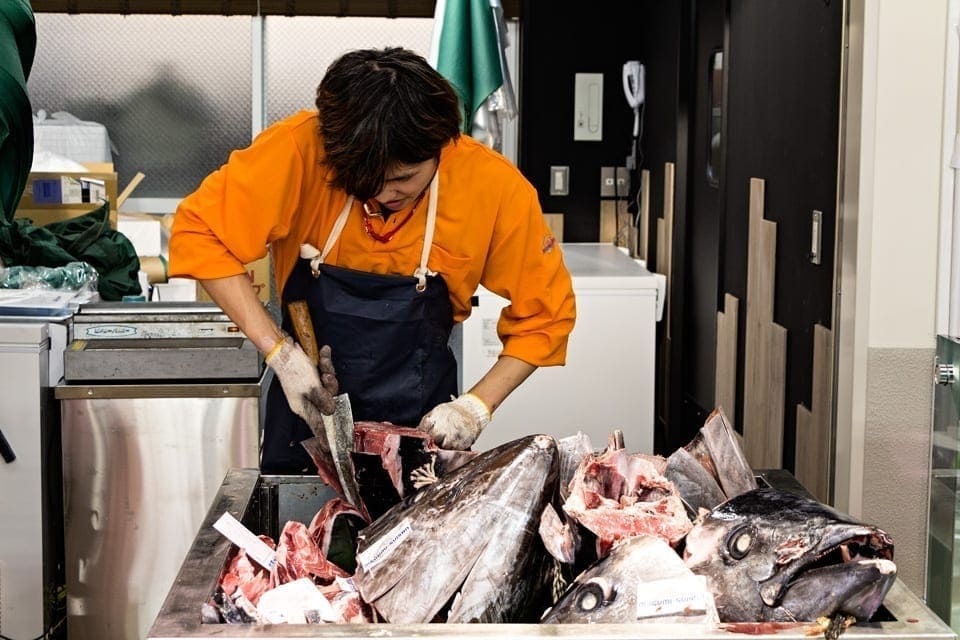
Tsukiji Outer Market is where all the fish action takes place. (The main market has now moved to the Toyosu fish market).
Whether you’ve come here for the delicate sushi or raw tuna heads, you’re at the right address.
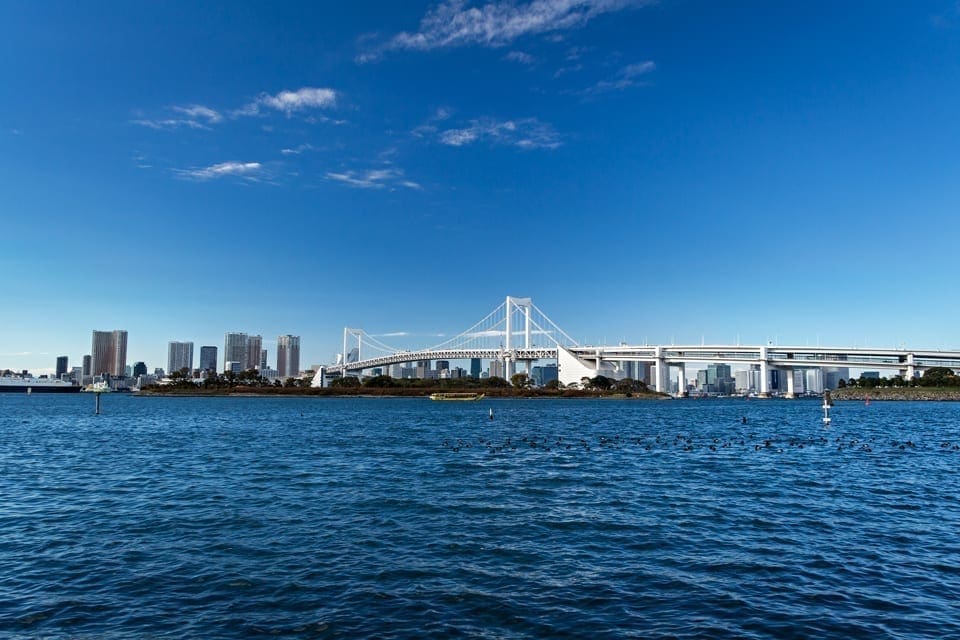
Doesn’t feel like 38-million metropolitan area?
And yet, this is Tokyo, and pretty close to the centre.
You can almost feel the cool breeze from the picture, can’t you?
Odaiba, from where this picture was taken, is a high-tech entertainment hub on an artificial island in Tokyo Bay.
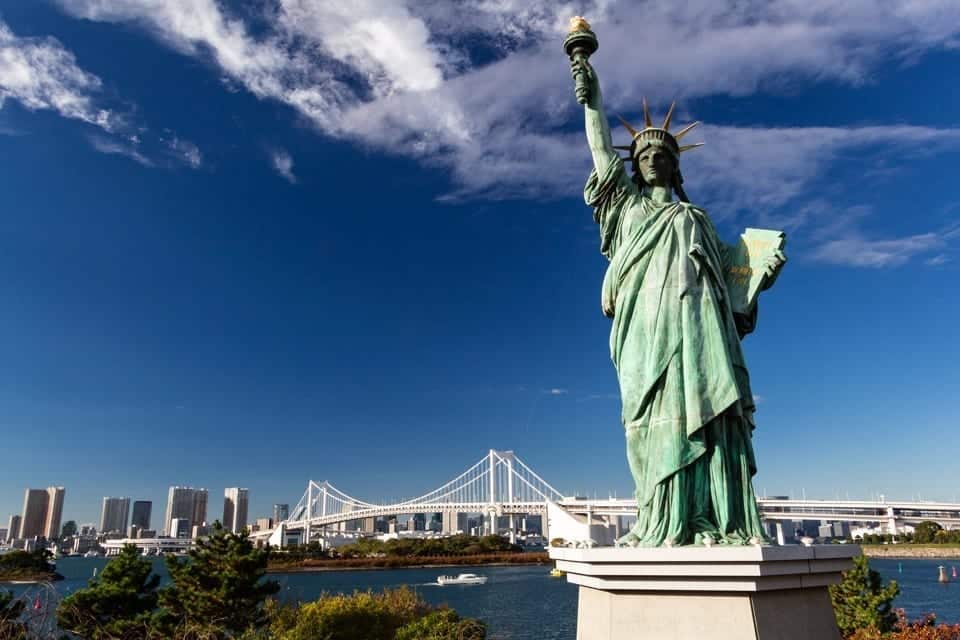
Odaiba seemed a lot more green than the other places we visited in Japan, but you can still see some autumn colours in the trees!
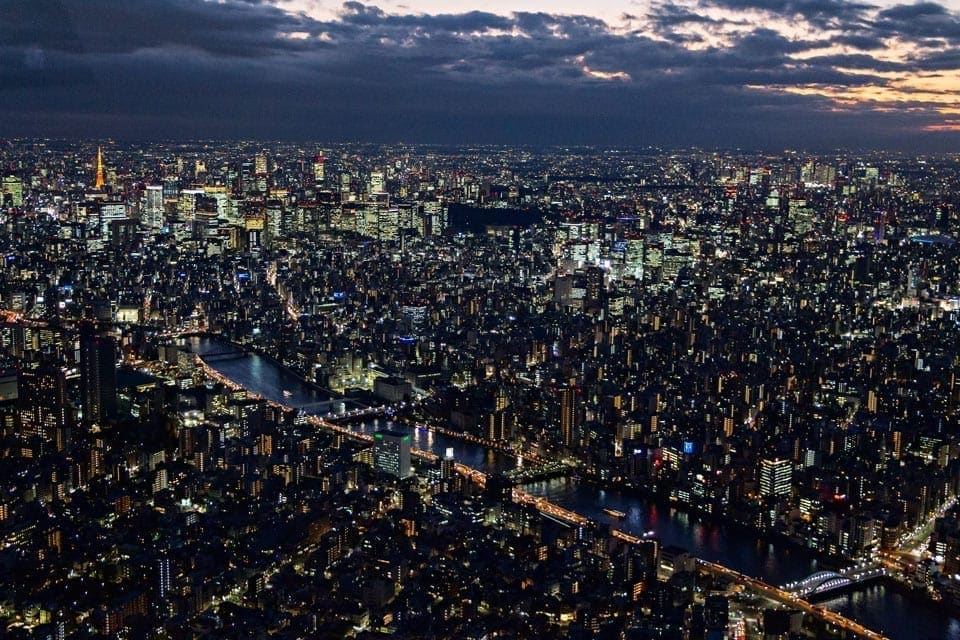
Whichever direction you look, there’s Tokyo around you.
And what better place to enjoy this view than Tokyo Skytree?!
634 m (2080 ft) tall, Tokyo Skytree is the tallest structure in Japan. Its observation deck is situated at 450 m (1480 ft) and offers an absolutely breathtaking and spectacular view. On clear days, Mt. Fuji is visible in the distance.
A bit of advice – come here for the sunset, you won’t regret it. And don’t forget your camera 🙂
Frequently asked questions: Japan in November
What is the autumn leaves festival in Japan?
The biggest autumn leaves festival in Japan takes place at the northern shore of Lake Kawaguchi, one of the Fuji Five Lakes, from early to late November every year.
When can you see autumn leaves in Japan?
Generally, the autumn leaves in Japan start in the middle to the end of October and peak in mid-November. Weather allowing, they might be there at the beginning of December, but they’ll definitely be past their prime and getting brown.
How cold is November in Japan?
Generally, the average highs are around 63°F (17° C), and lows around 50°F (10° C). But when we visited Japan in November, we actually had snow and were quite freezing.
Is Mt Fuji visible in November?
We barely saw Mount Fuji in November, as the weather was cloudy and snowy. But you might get lucky!
What to wear in Japan in November?
I suggest that you wear layers, especially if you plan on being out of your hotel for the whole day. It might be warm enough for T-shirts at one moment and then you might need a jacket in the evenings or mornings. And don’t forget to wear nice socks – in many restaurants and most temples, you need to take your shoes off to enter.
Last thoughts about Japan in November
Whichever time you decide to go to Japan, it’s bound to be amazing. That’s just how Japan is!
With its thousand-year-old traditions, temples, and shrines, and its state of the art, as modern as it goes technology, there’s something to find for everything.
If you’re planning to visit Japan – whenever! -, check out our Japan for beginners article and the Japan 10-day itinerary and travel guide. The articles are full of travel tips and will help you plan a trip to Japan that you’ll never forget!
I personally think that November in Japan is very beautiful. The autumn leaves really make everything look so dreamy!
Plus, there are tons of things to do in Japan in November – unlike in many other places, it’s not a shoulder season, so everything is open!
What do you think? Would you visit Japan in November?
Like it? Pin it!
